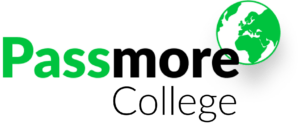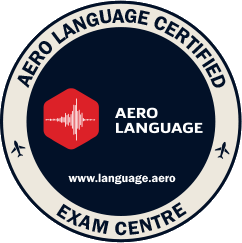Language learning can often feel like an uphill battle, filled with vocabulary lists and grammar drills that leave many learners frustrated and disengaged. However, one approach has consistently proven to be effective: immersion learning. By surrounding yourself with the language and culture you wish to learn, you can significantly enhance your fluency and comprehension. In this blog post, we’ll explore the power of immersion learning and how to implement the techniques effectively to make your language journey more enriching and enjoyable.
What is Immersion Learning?
Immersion learning is an educational technique where learners are fully engaged in the target language environment, minimizing their exposure to their native language. This method emphasizes active participation, encouraging learners to think and communicate in the new language. Instead of traditional classroom settings, immersion learning often takes place in real-world contexts where learners are compelled to use the language naturally.
As an example, if you have ever found yourself traveling in a foreign country, picking up words, phrases or sayings from the local language and trying to use them during your trip, you have experienced immersion firsthand. You may have noticed that in a short period of time, your use of the local language had improved significantly. Being surrounded by another language is the fastest and most natural way to learn it.
Benefits of Immersion Learning
Natural Acquisition: Immersion helps learners acquire language skills organically, similar to how children learn their first language—through constant exposure and practical use. This can seem to contradict the method that adults use to learn new subjects (listening exercises, writing homework, vocabulary lists) but, in fact, the two methods complement one another.
Cultural Context: Learning a language is not just about words; it’s also about understanding the culture. Immersion provides insights into cultural nuances, idioms, and social cues that are often lost in traditional learning environments. One example of this learning gap is a culture’s sense of humor, something rarely covered in modern language education.
Increased Motivation: Engaging with a language in a meaningful context can boost motivation. The thrill of real communication and cultural experiences encourages learners to practice more. Theoretical knowledge is certainly useful but every learner has experienced the conversation freeze when it fails.
Enhanced Listening and Speaking Skills: Constant exposure to native speakers allows learners to improve their listening comprehension and speaking skills rapidly. Accents and dialects are incredibly difficult to parse as a learner! Additionally, pronunciation improves quickly as you hear words used by native speakers and begin to say them more naturally and less stiffly.
How to Implement Immersion Techniques
Here are several practical strategies to integrate immersion techniques into your language learning routine:
1. Engage with Native Media
One of the simplest ways to immerse yourself in a language is to consume media in that language. This can include:
- Movies and TV Shows: Watch films or series in the target language with subtitles initially. Gradually switch to no subtitles to challenge your comprehension skills.
- Music: Listen to songs in the language and pay attention to the lyrics. Consider learning the lyrics and singing along to improve pronunciation.
- Podcasts and Audiobooks: Find podcasts or audiobooks that interest you. They’re an excellent way to hear natural speech patterns and varied vocabulary.
2. Read in the Target Language
Reading is a great way to reinforce vocabulary and grammar. Start with simpler materials, such as:
- Children’s Books: They use straightforward language and are often engaging.
- News Articles: Reading current events in the target language can help you learn relevant vocabulary and context.
- Blogs and Social Media: Follow blogs or social media accounts in your target language. They often provide contemporary language use in casual contexts.
3. Create a Language Environment
Transform your surroundings to reflect your target language. Here’s how:
- Label Household Items: Stick labels on objects around your home with their names in the target language to reinforce vocabulary.
- Change Your Device Language: If you’re feeling confident, switch your phone, computer, or social media accounts to the language you’re learning. This small change exposes you to everyday vocabulary.
- Join Language Exchange Platforms: Connect with native speakers who want to learn your language. This mutual exchange can enhance your speaking and listening skills.
4. Practice Speaking Regularly
Finding opportunities to speak is crucial in immersion learning. Consider:
- Language Meetups: Look for local or online language exchange groups where you can practice speaking with others.
- Tutoring or Conversation Partners: Hire a tutor or find a conversation partner who is a native speaker. Regular conversation practice is essential for building confidence.
- Language Courses: Though not all courses focus as much on speaking, many modern language companies do include it as a central part of their lessons. The benefit to this is that you can practice directly with qualified, native speakers.
5. Travel and Cultural Immersion
If possible, nothing beats the experience of traveling to a country where the language is spoken. Here are some tips:
- Stay with Locals: Consider homestays or local accommodations that allow for daily interactions with native speakers.
- Participate in Local Events: Attend cultural events, markets, or festivals where you can engage with the language and culture directly.
- Practice Daily Tasks: Use the language in everyday scenarios, such as ordering food, asking for directions, or shopping.
6. Leverage Technology
Technology can be a powerful ally in your immersion journey:
- Language Learning Apps: Use apps like Duolingo, Babbel, or Rosetta Stone that often try to incorporate immersive techniques.
- Virtual Reality (VR): Explore VR language learning tools that (more or less) simulate real-life scenarios where you can practice speaking and listening.
- Online Courses: Like mentioned above, this can sometimes be the best mix of immersion and classic learning techniques. Many laguage companies offer classes online as well as in-person.
Overcoming Challenges in Immersion Learning
While immersion is incredibly effective, it can also be daunting. Here are a few common challenges and how to address them:
- Feeling Overwhelmed: Start small. Engage with manageable content before diving into complex materials. Remember: learning is a journey and sometimes the beginning can be challenging. If you start small, you can build to something much bigger in a short time.
- Fear of Making Mistakes: Embrace mistakes as part of the learning process. So many learners get stuck because they’re afraid to try new words, phrases or sentence structures. Remember, even native speakers make errors. Embrace them!
- Limited Access to Native Speakers: If you can’t find native speakers locally, use online platforms to connect with others around the world or find an online course with a reputable company.
Conclusion
Immersion learning is a transformative approach to language acquisition that opens the door to deeper understanding and greater fluency. By surrounding yourself with the language and culture through various techniques, you’ll find that language learning becomes more engaging and effective. Whether through media, conversation, or travel, immersing yourself in a language creates an authentic learning experience that will significantly enhance your skills.
At Passmore College, this is one of many techniques we have developed over thirty years to help our students expand their fluency, cultural knowledge and comprehension. With classes both online, in-person or hybrid, we have something for learners of any age or level. You can take a look at our courses, other blog posts or simply contact us for more information!
So, take the plunge! Start incorporating these immersion techniques into your language learning routine today and watch your abilities flourish. Happy learning!


